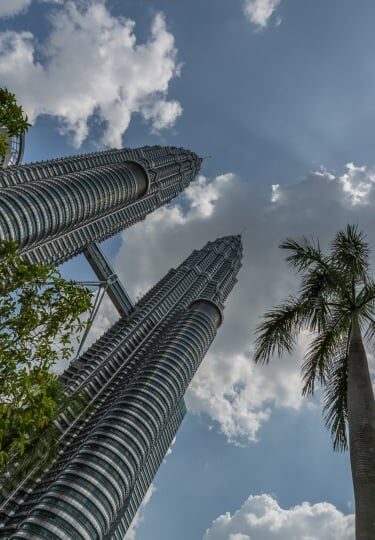“What is Malaysia known for?” is a question with many answers. Both culturally and geographically diverse, Malaysia offers travelers an incredible amount to see and do.
With 879 islands, this country is justifiably famous for its breathtaking beaches and nature. At the same time, Malaysia’s cities are known for their historic architecture and thriving arts scenes.
Certainly, if someone asks what Malaysia is famous for, many people would reasonably answer its cuisine. From rich, savory bowls of Hokkien mee to sweet cendol, there are an almost overwhelming number of delicious specialties to try.
The Petronas Towers
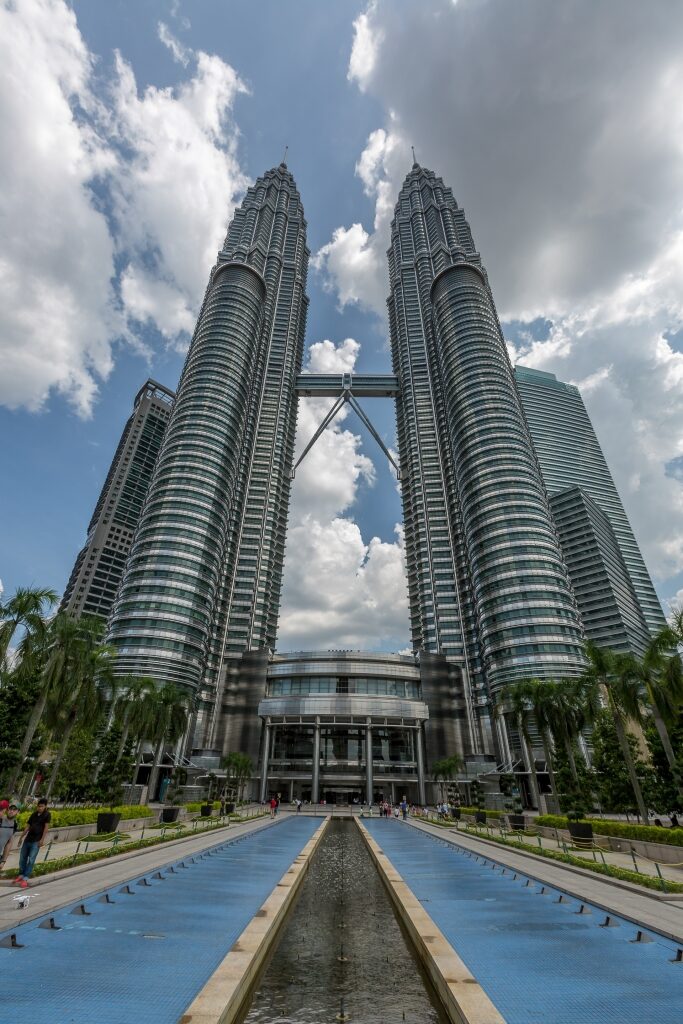
Petronas Towers, Kuala Lumpur
When the Petronas Towers first opened to the public, they were the highest man-made structures in the world. Even if they were dethroned in 2004, at 1,483 feet and 88 stories high, they still make for an imposing sight—not to mention an incredible view.
If you’re looking to take in the skyline of Kuala Lumpur from way up high, you have two options here. The lower of the two is the Skybridge, which unites the two towers on the 41st floor. The view from there is already vertigo-inducing, but there’s an even higher option. For the maximum effect, make your way to the Petronas Twin Towers Observation Deck on the 86th floor.
Kopitiam Culture
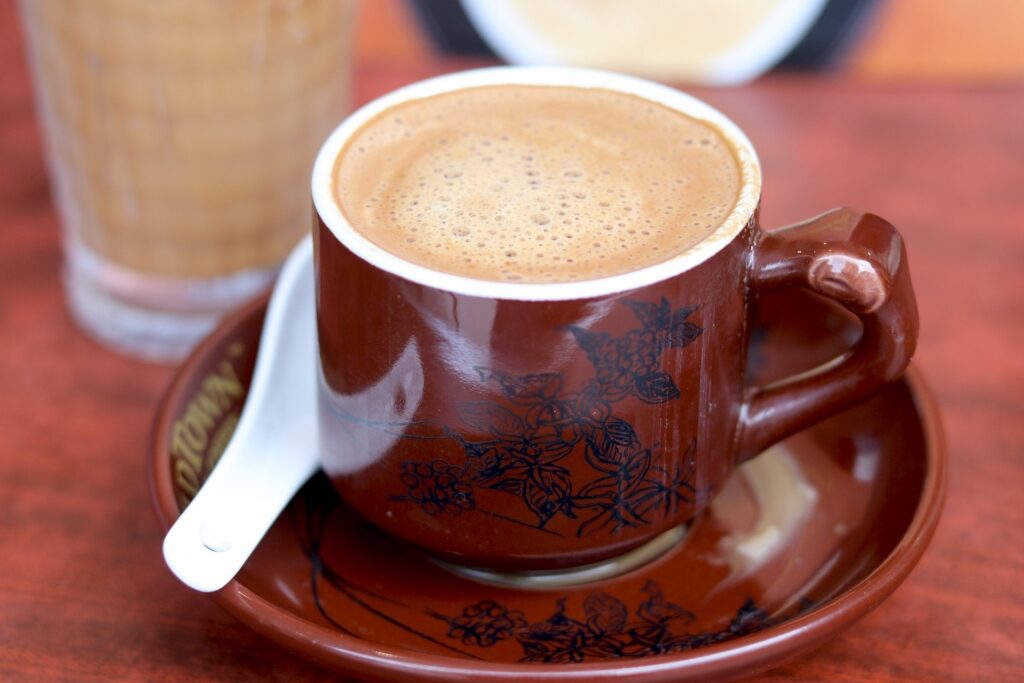
Coffee
Malaysians really know how to start their days right. If you want to have breakfast like a local, head straight for a kopitiam. Like many things in Malaysia, the name is actually rooted in two different cultures. Kopi means “coffee” in Malay, while tiam is “shop” in Hokkien dialect. These humble spots typically serve a mix of coffee, tea, and both sweet and savory bites.
The move here is to order a pulled tea, a beverage that comes with a side of showmanship. Pouring the tea dramatically back and forth between two cups creates a slightly foamy, richer texture. Alternatively, opt for the traditional Ipoh white coffee. Contrary to what the name might imply, this brew is roughly the color of milk chocolate. It owes its distinctive flavor to roasting the coffee beans with margarine and is usually served with condensed milk.
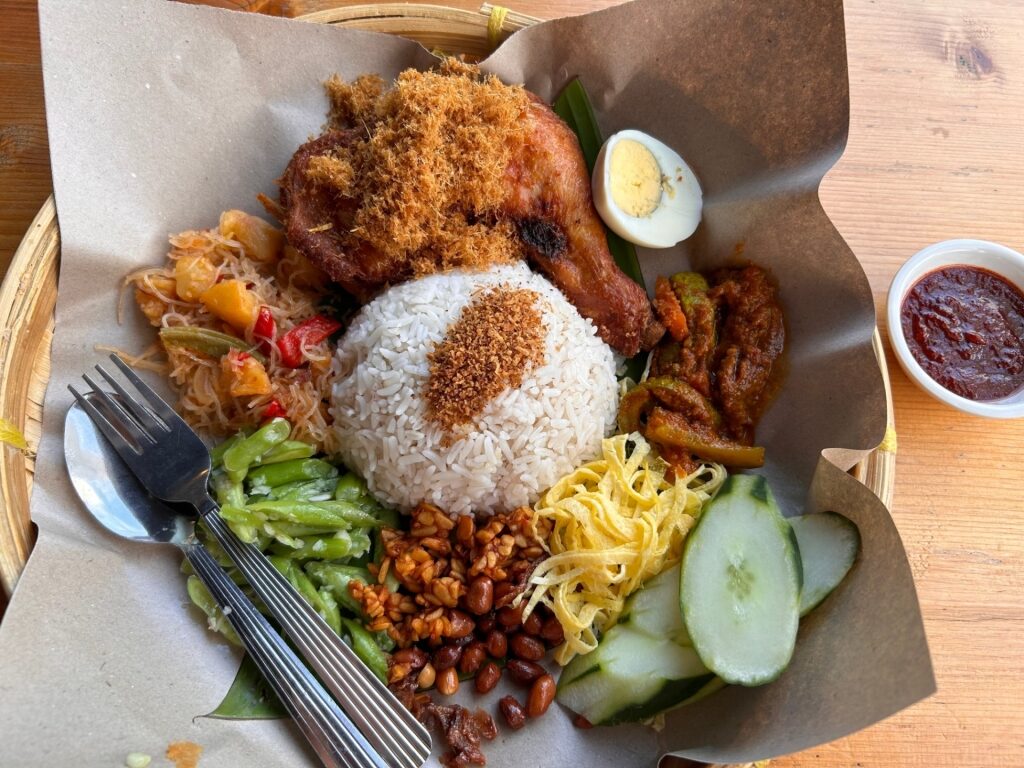
Nasi lemak
If you’re craving a savory breakfast, order a plate of nasi lemak, a dome of fragrant rice usually served with fried anchovies, cucumbers, sambal, a hard-boiled egg, and peanuts.
For something on the sweeter side, get the kaya toast. Popular throughout Malaysia and Singapore, this indulgent treat consists of two thick-cut slices of buttered white toast with kaya. This sweet coconut milk jam is thickened with eggs and flavored with pandan, a fragrant tropical plant.
The National Mosque of Malaysia
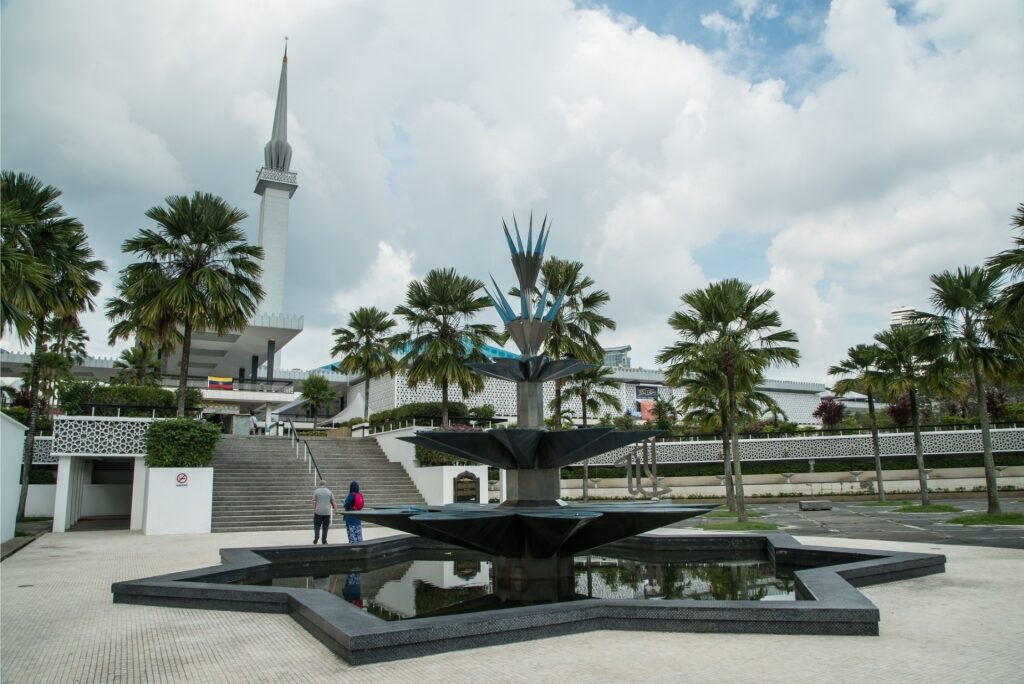
National Mosque of Malaysia, Kuala Lumpur
The sheer scale of the National Mosque of Malaysia borders on overwhelming. During prayer times, up to 15,000 visitors can enter this palatial space. As befitting such an important structure, architects in the 1960s spared no expense with the design. They drew on visual elements from the Mughal Empire for inspiration.
Most visitors will make a beeline for the minaret and 18-pointed golden dome at the heart of the complex, but there’s actually much more to explore here. The grounds encompass 13 acres of beautifully landscaped gardens, making it one of the best things to do in Kuala Lumpur for a moment of serenity.
Perdana Botanical Gardens
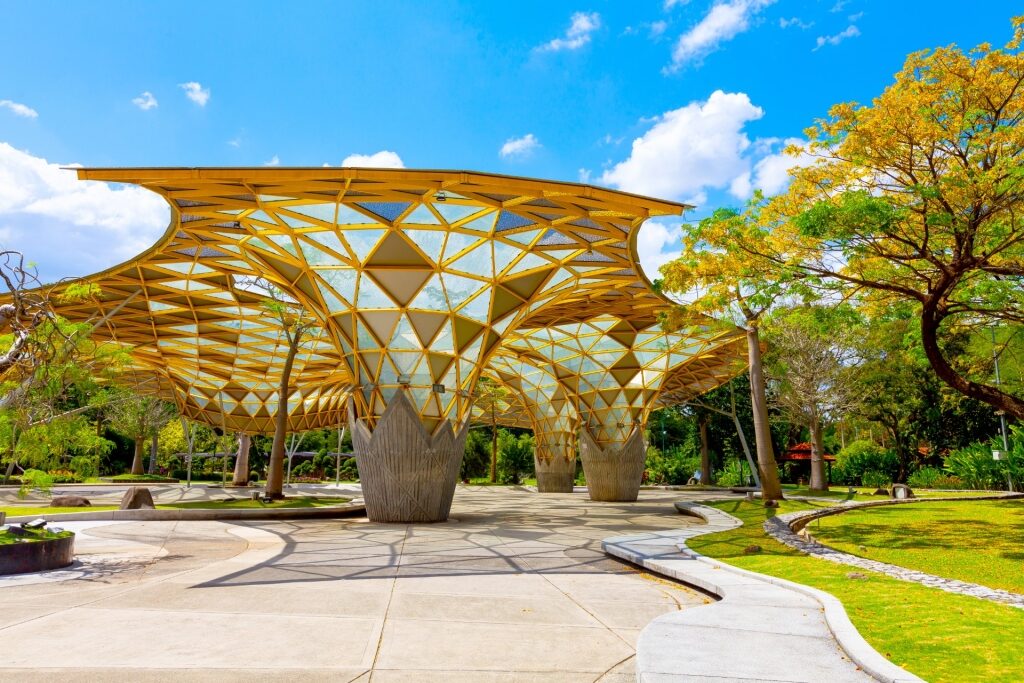
Perdana Botanical Gardens, Kuala Lumpur
Like many Southeast Asian metropolises, Kuala Lumpur has grown exponentially over the last few decades. Today, the Malaysian capital is a sea of glass-and-steel skyscrapers. Thankfully, in the midst of all this development, the city has held only its green lung. The Perdana Botanical Gardens encompass 266 lush, green acres right in the center.
Dating back to 1888, this is one of the older botanical gardens in the region. It was created under British colonial rule by Alfred Venning. The beautifully landscaped grounds center around a large man-made lake with a fountain.
The gardens are actually host to a number of smaller attractions. The Orchid Garden contains hundreds of blooms, some of them exceptionally rare, while the Bird Park has more than 3,000 avian occupants. Finally, families with children won’t want to miss the Kuala Lumpur Butterfly Park, one of the largest butterfly parks in the world. More than 5,000 brilliantly hued butterflies flit around this glass enclosure.
Batu Caves
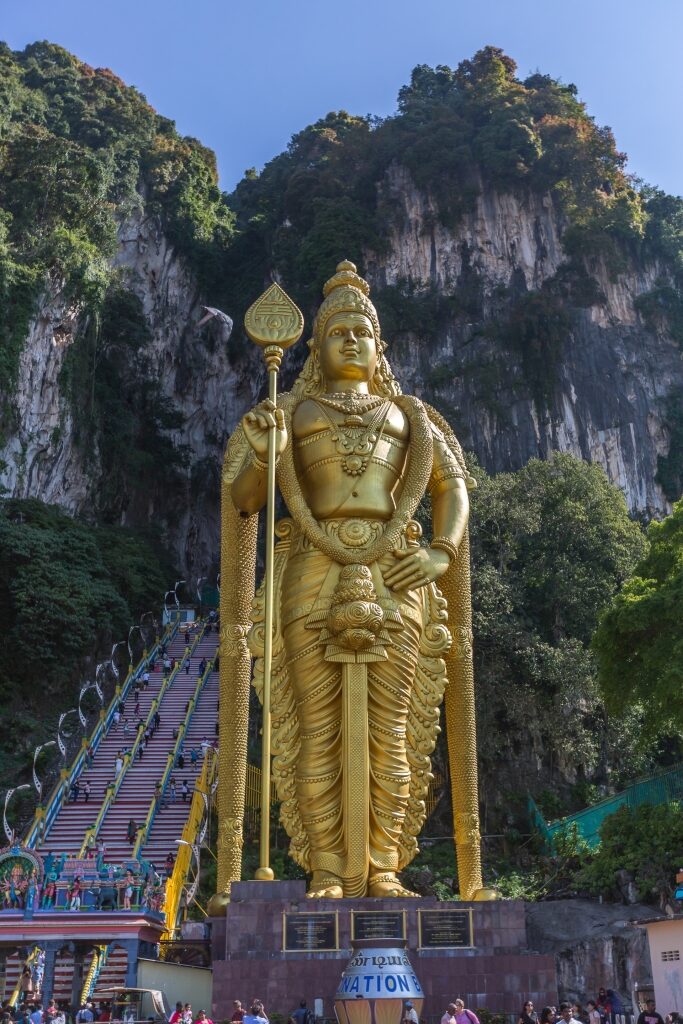
Batu Caves
Located 13 miles north of Kuala Lumpur, the Batu Caves make for an easy day trip from the capital. Named for the nearby Batu Pahat River, this network of limestone caves was once lived in by the indigenous Temuan people. In the late 1800s, the caves became an important religious site, with several Hindu temples.
Visitors to the Batu Caves are greeted by the sight of an enormous golden statue of Murugan, the Hindu god of war, victory, and protection, one of the tallest of its kind in the world. Behind the statue are a set of colorful concrete stairs set into the rock that lead into the cave system. With all the lush greenery, sheer rock faces, and colorfully painted decorations, it’s easy to see why this site is so often photographed.
Eagle Square
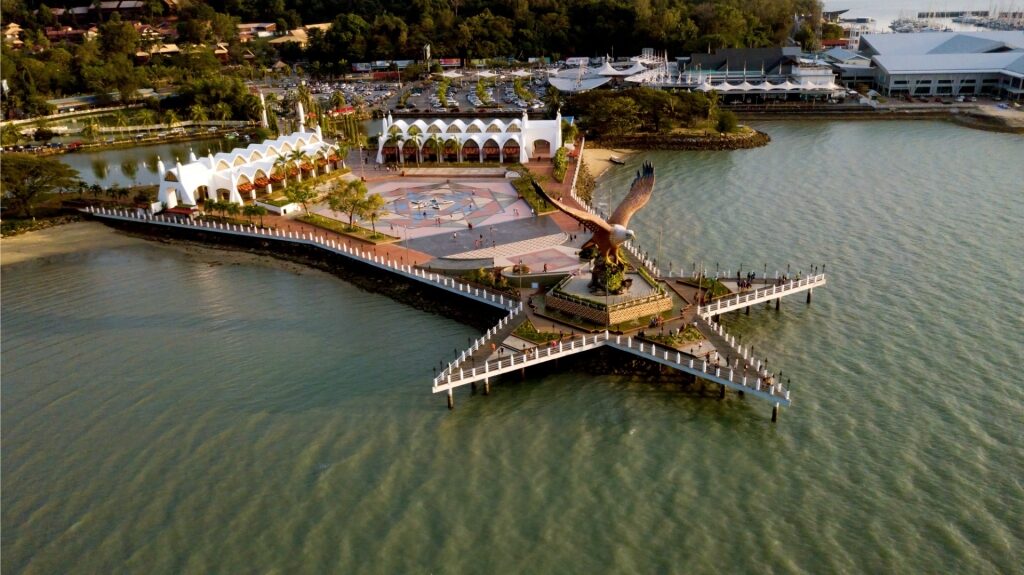
Eagle Square, Langkawi
Almost invariably, the first sight that travelers see when they arrive on Langkawi is an enormous eagle, wings extended and talons flexed. The raptor in question is a red-backed sea eagle, for which the island is named. Standing roughly 40 feet high, this enormous bird is perched on a star-shaped base, looking poised to take off.
Since Dataran Lang, as Eagle Square is known in Malay, is a central point for boats docking in Langkawi, there’s a bunch of small shops and restaurants clustered in the area. Snap the obligatory selfie in front of the eagle and then explore the surroundings.
Hawker Food
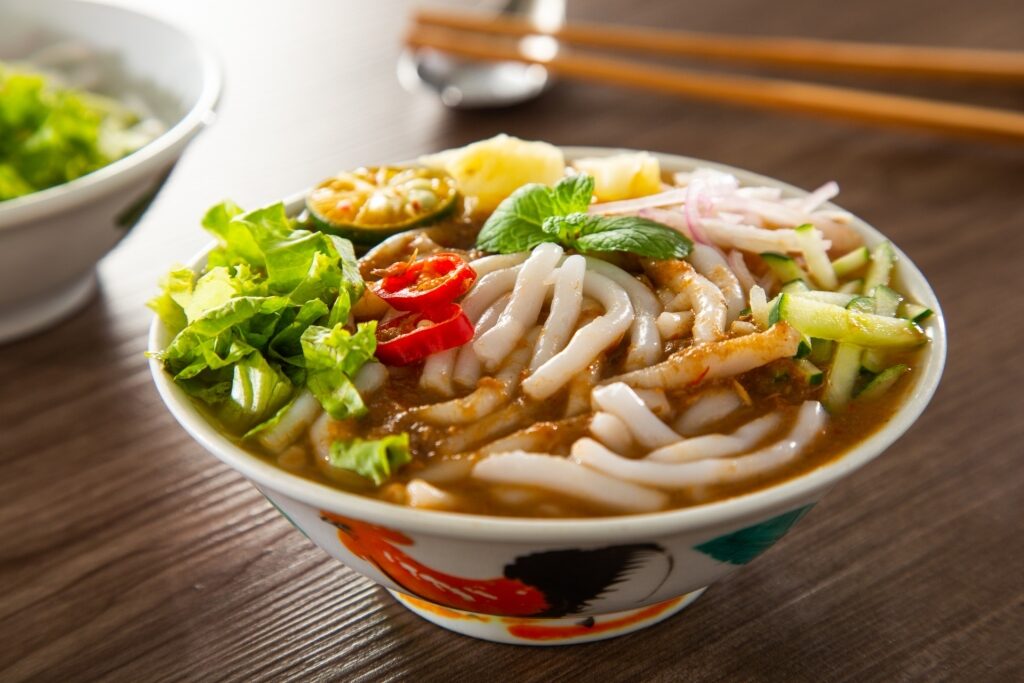
Asam laksa
When it comes to street food, Malaysia is hard to beat—particularly if you go to the island of Penang. Thanks to its multicultural history as a trading port, George Town boasts an incredibly diverse array of delicious eats. Even though the city’s fine dining scene is thriving, many locals would agree that the best food in Penang is still found at hawker stalls and mom-and-pop restaurants.
The first dish to try here is asam laksa, a sour, savory, spicy rice noodle soup with a rich fish broth. Note that there are dozens of different regional recipes for laksa throughout Malaysia and Singapore, each with their own appeal. The Penang iteration gets its umami from dried shrimp paste and its tang from tamarind.
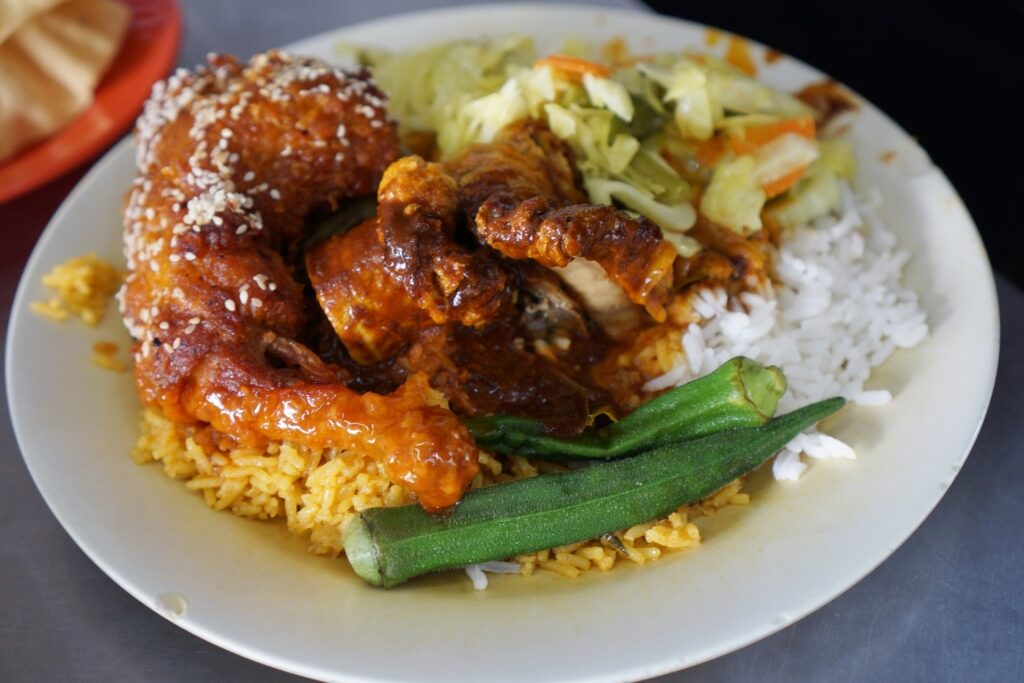
Nasi kandar
Next, a plate of nasi kandar is essential. This Tamil Muslim staple essentially refers to rice loaded up with an assortment of rich curries. Historically a working-class staple, it’s unbeatable for an affordable, tasty lunch. It’s a great option for vegetarians, since there are invariably several vegetarian curries along with the mutton, chicken, and seafood dishes.
Finally, char kway teow is an unmissable dish in any part of Malaysia. The thicky, chewy rice noodles get a touch of smoke from a brief stint in a blazing hot wok. Scrambled egg, sliced lap cheong, a sweet Chinese sausage, and bean sprouts round it out. Seafood including squid or cockles are another common addition, along with cubes of fatty pork.
Read: The Ultimate Kuala Lumpur Food Guide
Kilim Geoforest Park
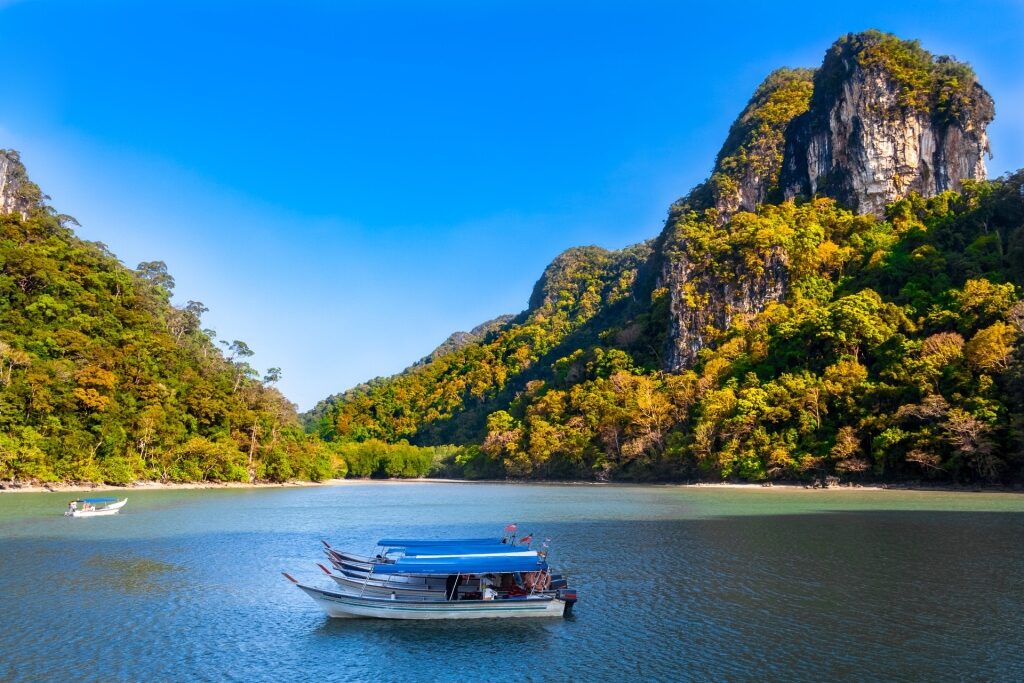
Kilim Geoforest Park, Langkawi
For nature-lovers, it doesn’t get much better than this UNESCO-lauded nature preserve. One of the best things to do in Langkawi, Kilim Geoforest Park sprawls over more than 24,000 acres of pristine mangroves. Limestone cliffs rise dramatically above the Kilim River, while Langkawi’s namesake eagles swoop and dive overhead.
Birders will be in heaven here, as 238 species call this tropical sanctuary home. You’ll also find dusky leaf monkeys and long-tailed macaques swinging through the trees.
In addition to wildlife, the park offers plenty of opportunities for adrenaline-junkies. Jet-skiing, spelunking expeditions, and more are all there for adventurous travelers.
Beautiful Beaches
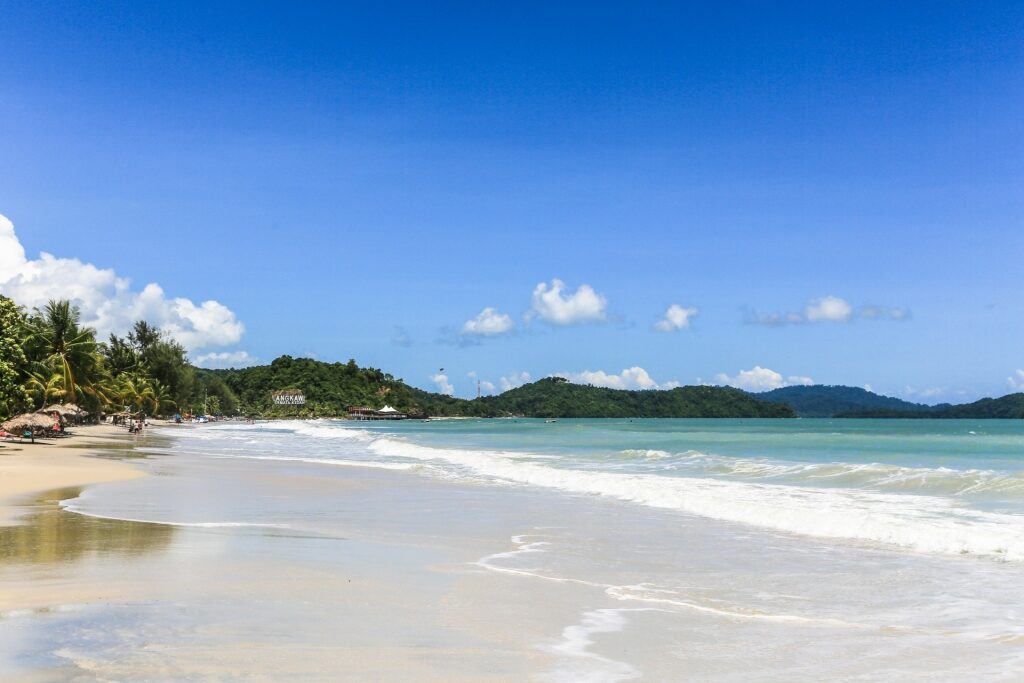
Pantai Cenang, Langkawi
What is Malaysia known for? Beaches, of course. Sunbathers in this Southeast Asian country are spoiled for choice, especially since pristine shorelines are located close to many of the most popular destinations. Even in the urban jungle of Kuala Lumpur, you’re within easy driving distance of several lovely beaches. Penang also boasts a number of stretches of sandy coastline.
For eye-popping white sands and turquoise waters, though, you’ll want to head to Langkawi. Of all the postcard-perfect Malaysian beaches here, Pantai Cenang is the most popular. Situated on the western side of the island, this beach consists of more than a mile of palm-fringed sand. The calm, shallow waters are great for swimming and safe for children. For active travelers, there are all sorts of watersports available.
Sweet Treats
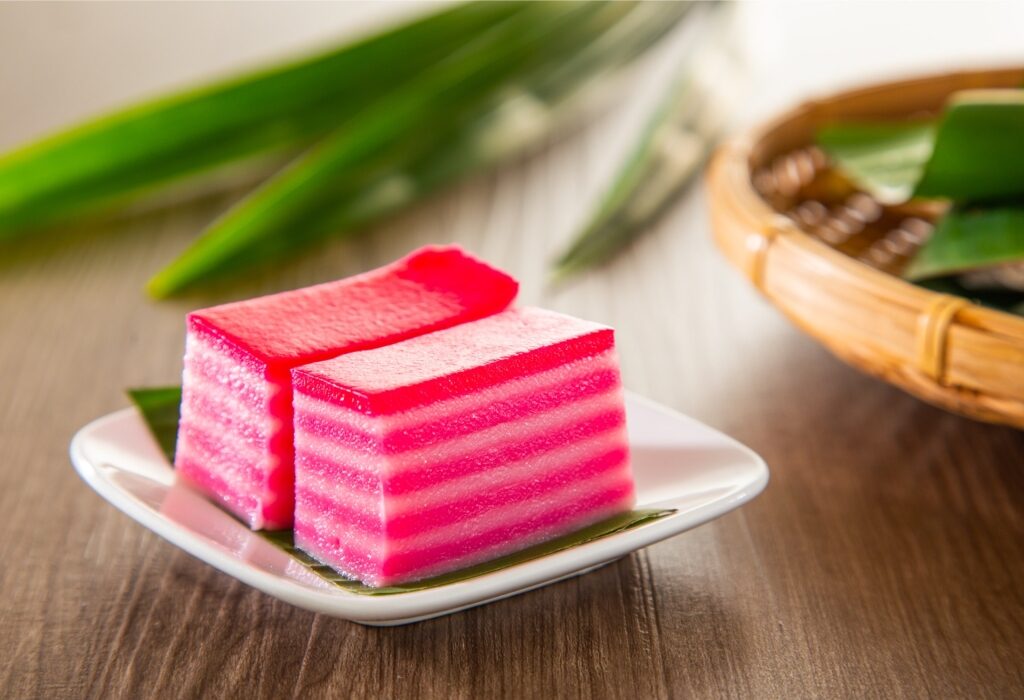
Kuih lapis
Malaysians have a serious sweet tooth, as evidenced by the profusion of indulgent cakes, sugary snacks, and icy treats. Unlike Western desserts, which tend to appear at the end of a meal, kuih are meant to be snacked on at various points throughout the day. Kuih lapis, a colorful, steamed layer pudding made with rice flour and sago, is both lovely to look at and to eat.
Another eye-catching treat is kek lapis, a specialty of Sarawak that can be found throughout Malaysia. This multihued cake is baked in stages to create thin, distinct layers of batter that form intricate patterns. Finally, cendol is made with skinny rice flour jellies that resemble green spaghetti. It’s served with coconut milk and a host of other topics that may include sweetened red beans, jaggery syrup, durian, or jackfruit.
Kek Lok Si Temple
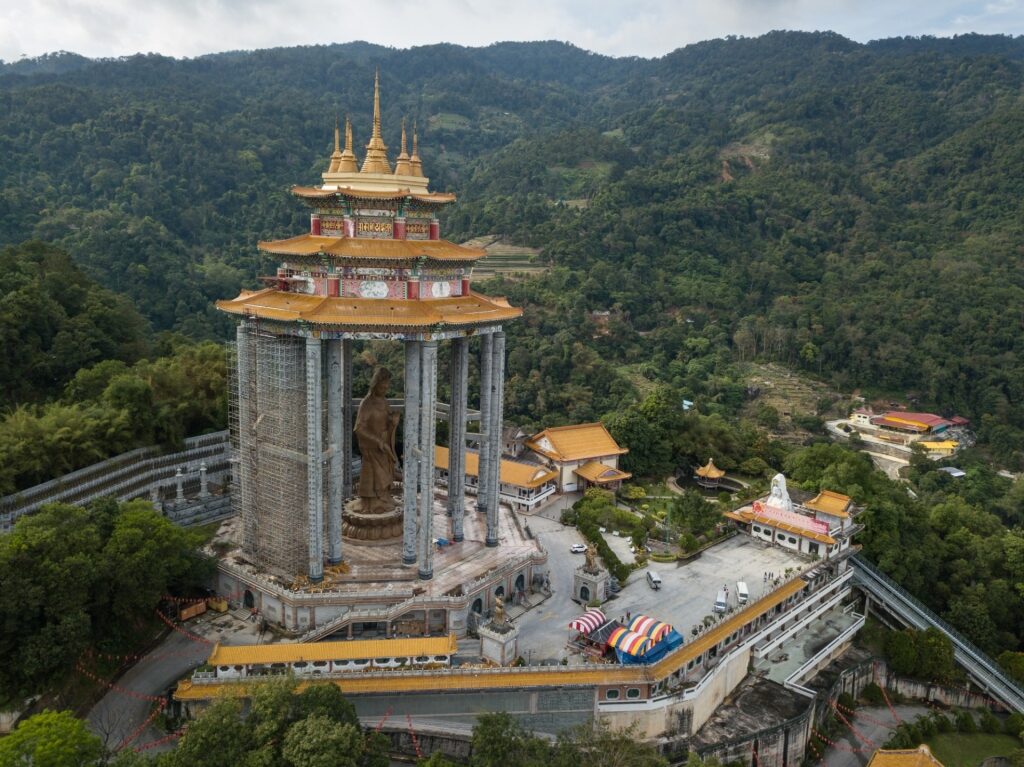
Kek Lok Si Temple, Penang
First founded in 1890, visiting this sprawling Buddhist temple complex is one of the best things to do in Penang. True to its name, the Temple of Ten Thousand Buddhas, the space contains thousands of statues wrought in bronze and alabaster. There’s also an impressive 99-foot-tall statue of the Goddess of Mercy.
It’s important to remember when visiting the Kek Lok Si Temple that this is an important Buddhist pilgrimage site and active place of worship. Visitors are asked to behave respectfully and dress modestly while wandering among the pagodas.
Street Art
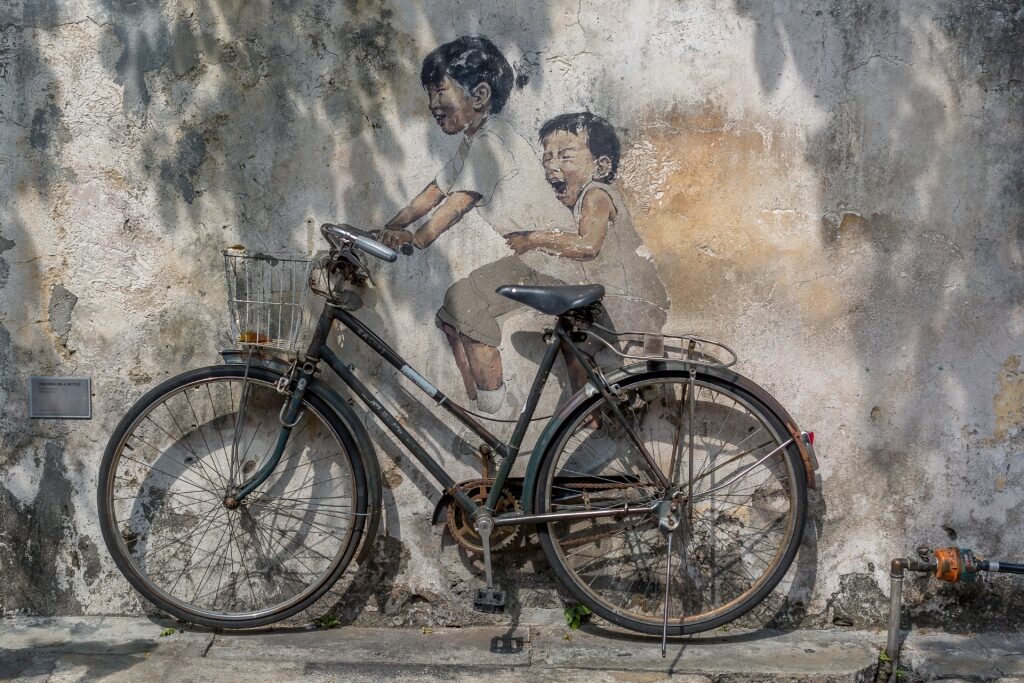
George Town, Penang
Both Kuala Lumpur and Penang have amassed a serious collection of street murals in recent years. In Kuala Lumpur, Kwai Chai Hong, or “Little Ghost Lane”, situated in Chinatown, has a particularly rich concentration of work. Most of these famous murals depict realistic scenes from life in the capital in decades past.
Over in Penang, George Town’s collection of street art started in 2012 with a series of six realistic figure paintings by Lithuanian artist Ernest Zacharevic. After the works went viral, additional pieces by other artists followed, bringing new life to the colonial architecture.
Peranakan History
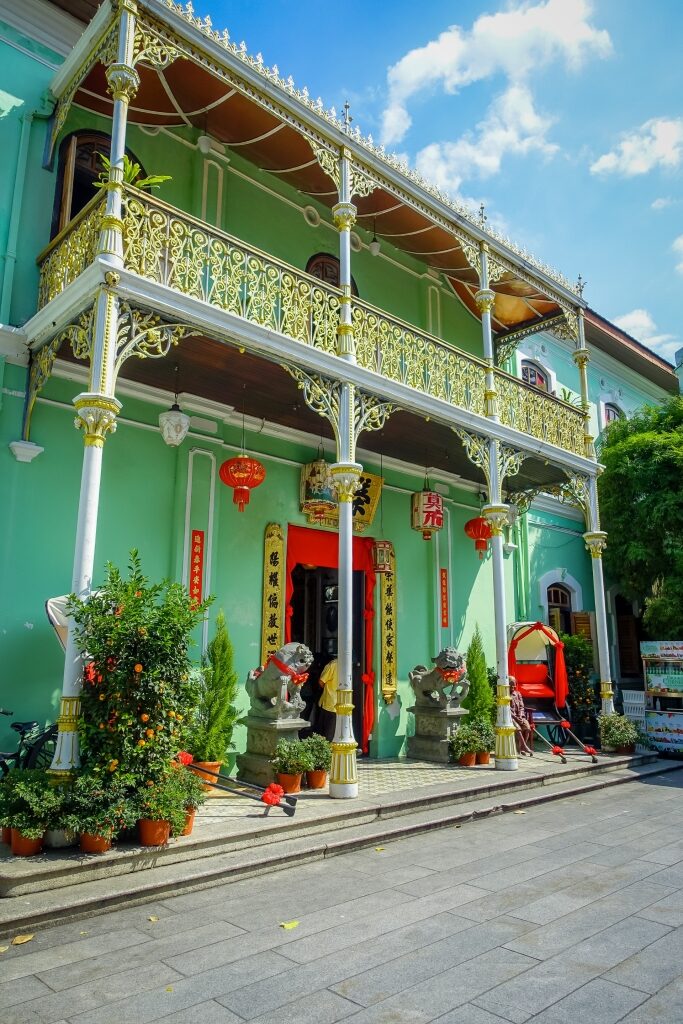
Pinang Peranakan Mansion in George Town, Penang
Sometimes called the Straits Chinese or Baba-Nyonya, the Peranakans were an ethnically Chinese merchant class who settled at port towns around Southeast Asia. Today, their lasting cultural impact can be seen from Phuket, Thailand to Malacca, Malaysia and Singapore. The Peranakans once had a particularly strong presence in Penang.
Once you know where to look, you’ll find evidence of Perakan culture everywhere in George Town. It’s a lingering driving force in the cuisine here. While tangy, saucy, aromatic Peranakan dishes aren’t always the most common, they’re proudly served at a number of restaurants. You’ll also see it in the architecture. The Peranakans favored especially colorful, ornate facades for their homes, many of which can still be seen today.
The best place to learn more is in George Town’s Pinang Peranakan Mansion, housed in a pale green painted home in the center of town. In the 1800s, this was once the home of the wealthy business mogul Chung Keng Quee. He was a great collector of fine furniture and thousands of pieces of art and antique furnishings are still housed in the collection.
Entopia by Penang Butterfly Farm

Penang Butterfly Farm
There are butterfly farms and then there is Entopia, a dreamy wonderland located roughly a 40-minute drive out of George Town, Penang. Started in 1968 by a self-taught entomologist, this astonishing space draws some five million visitors a year from all corners of the globe. Both the indoor and the outdoor gardens are spectacular and full of tropical flowers.
You could have a perfectly wonderful visit simply wandering through the greenhouse filled with thousands of butterflies. For something really special though, be sure to check out the regularly scheduled educational programming. Entopia offers multiple talks for children daily in the Cocoon Indoor Discovery Center. Even better, sign up to help staff release new butterflies into the enclosure.
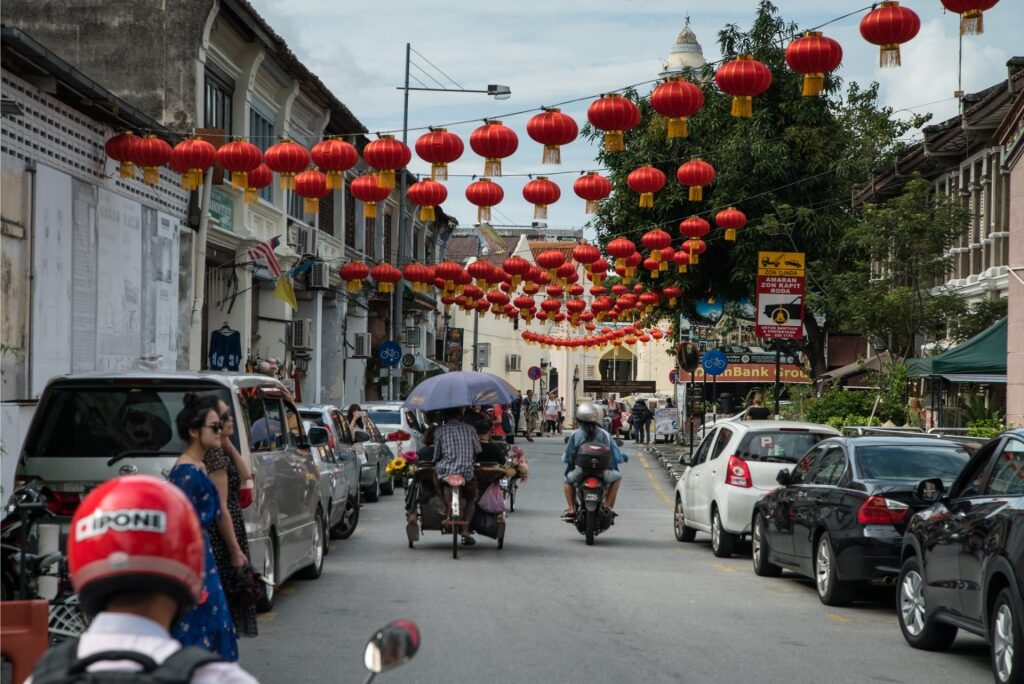
George Town, Penang
Discover all that this diverse country has to offer on one of Celebrity’s cruises to Malaysia. Browse upcoming Malaysia itineraries and book your adventure today.
